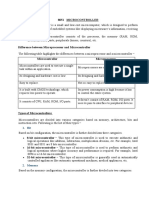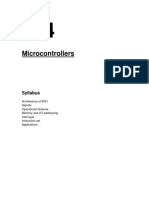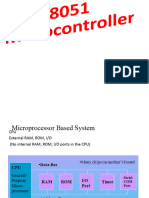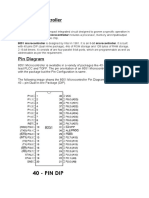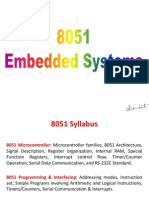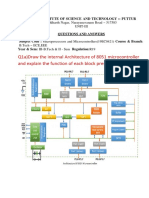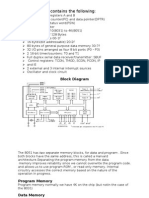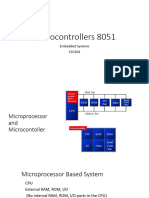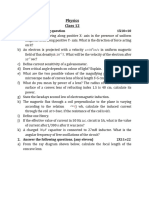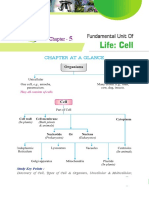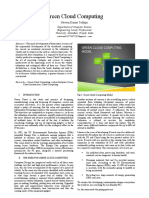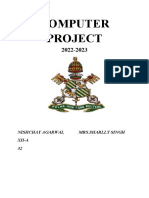0% found this document useful (0 votes)
108 views7 pages8051 Microcontroller
The 8051 microcontroller, introduced by Intel in 1981, is an 8-bit system on a chip featuring 128 bytes of RAM, 4K bytes of ROM, and multiple I/O ports, timers, and interrupt sources. Variants include the 8052, which has more RAM and ROM, and the 8031, which is ROM-less and requires external memory. The 8051 family supports various configurations and has a robust interrupt system, enabling efficient task management.
Uploaded by
satishCopyright
© © All Rights Reserved
We take content rights seriously. If you suspect this is your content, claim it here.
Available Formats
Download as DOCX, PDF, TXT or read online on Scribd
0% found this document useful (0 votes)
108 views7 pages8051 Microcontroller
The 8051 microcontroller, introduced by Intel in 1981, is an 8-bit system on a chip featuring 128 bytes of RAM, 4K bytes of ROM, and multiple I/O ports, timers, and interrupt sources. Variants include the 8052, which has more RAM and ROM, and the 8031, which is ROM-less and requires external memory. The 8051 family supports various configurations and has a robust interrupt system, enabling efficient task management.
Uploaded by
satishCopyright
© © All Rights Reserved
We take content rights seriously. If you suspect this is your content, claim it here.
Available Formats
Download as DOCX, PDF, TXT or read online on Scribd
/ 7




